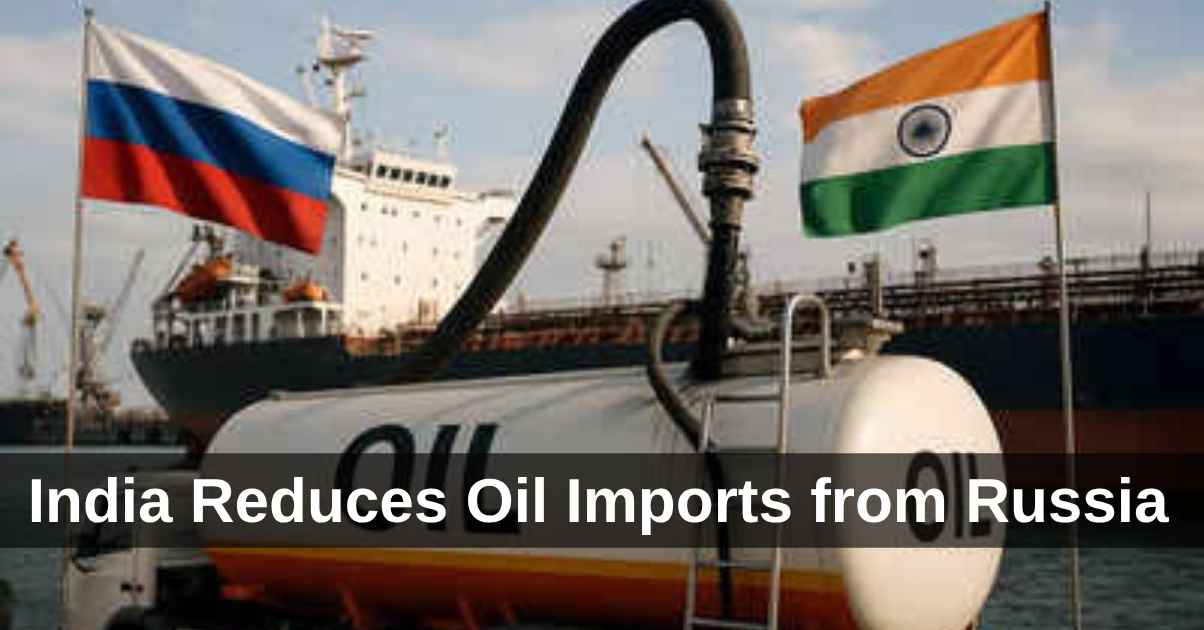
India Faces Tough Choices After U.S. Sanctions on Russian Oil Companies
India’s oil strategy is now under pressure after recent U.S. sanctions on major Russian oil companies. This move has forced India to reduce its crude oil imports from Russia — a decision that could soon impact petrol and diesel prices in the country.
Why India Bought Oil from Russia
Since the Russia–Ukraine war began, India has been buying discounted crude oil from Russia. This helped the government control inflation and keep fuel prices stable.
In 2020, India imported only 1.7% of its total crude from Russia. But after heavy discounts in 2022, that share rose to 37% in 2023 and about 40% in 2024. Currently, around one-third of India’s oil needs were met through Russian supplies.
What Changed Recently
On October 22, U.S. President Donald Trump imposed sanctions on Rosneft and Lukoil — Russia’s two biggest oil companies. These two companies supply nearly two-thirds of Russia total oil exports and one-third of that went directly to India.
Read Also : 8th Pay Commission Update: Central Government Employees May Get ₹34,000 Salary Hike!
Now, because of these sanctions, India cannot buy oil from these companies as any financial transactions involving them will be restricted by the U.S.
As a result, India will lose about 1 million barrels of crude per day from Russian sources and will have to purchase from other countries like Iraq, Saudi Arabia, the U.S., Brazil, and the UAE.
Financial Impact on India
According to an Economic Times report, Indian refiners will have to cancel their November–December shipments, as all payments to Russia must be cleared before November 21.
The estimated extra cost due to this supply shift is $2.5–3 billion (₹4,000 crore). This is because India will no longer get the $2–5 per barrel discount that Russia offered earlier.
Impact on Indian Companies
Private oil companies like Reliance Industries and Nayara Energy are among the biggest buyers of Russian crude. Nayara depends on Russia for nearly 70% of its supply.
After the U.S sanctions, Reliance shares fell 1%, while BPCL, HPCL, and Indian Oil shares dropped by 2–3%.
Moreover, several Indian firms such as ONGC, Oil India, BPCL, and Indian Oil had investments in Russian oil projects. Profits worth $1 billion (₹8,500 crore) are now stuck in Russia because of banking restrictions.
Will Petrol and Diesel Prices Increase?
Experts have mixed opinions.
A senior refinery executive told Economic Times that “prices will rise slightly, but we will manage.” Since crude is still around $60 per barrel, the immediate effect might be limited.
However, market analysts warn that in the next 3–6 months, India may need to buy oil on the spot market at higher prices. If global crude prices rise — which is likely as Russia’s 3.1 million barrels/day supply leaves the market — Indian consumers could soon feel the impact at petrol pumps.
Taxes Play a Major Role
Experts also remind that the biggest reason petrol and diesel are expensive in India is high taxation, not global prices. In 2014, when crude prices were over $100 per barrel, Indians still paid less at the pump because of lower taxes. Today, even with cheaper crude, taxes keep prices high.
India’s Alternative Plan
India has been diversifying its oil sources for the past three years.
- Iraq supplies 20–30% of India’s crude.
- Saudi Arabia provides 16–18%.
- OPEC countries together make up 50% of total imports.
- The U.S, recently increased its exports to India to 2.5 lakh barrels per day.
But these options are more expensive and require new shipping routes and logistics which will take time and money to set up.
The Bigger Question
The key question now is — Did U.S. pressure succeed?
India earlier said it would not bow to international pressure while buying Russian oil. But as supplies decline, the country may face higher costs and possible fuel price hikes.
For now, experts say the situation is “manageable,” but if global crude rises again, petrol and diesel could get costlier in the coming months.